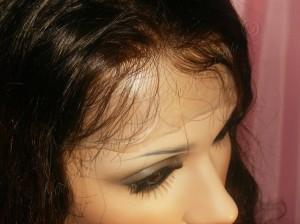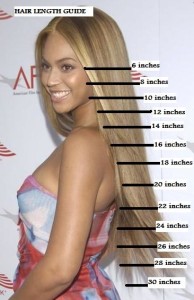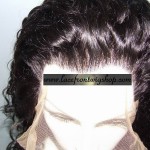Lace Color
If this is your first time ordering a lace wig then you may not be familiar with all of the options available for customization of your wig. So, here we will break these options down for you so that you will be able to make an informed choice in choosing the options that you want for your wig.
Most people’s scalp complexion is lighter than their skin complexion. So if you plan on cutting the lace all the way back to your hairline then you should choose a lace shade that is closest to the complexion of your scalp.
If you plan on leaving a little of the lace out beyond the hairline then you should choose a lace color that is closest to your skin complexion. The majority of experienced lace front wig wearers prefer to get a lace close to their skin tone. This is the best option if you don’t want to experiment with using makeup/concealer to camouflage the lace.
Baby Hair
Baby Hair refers to the short fine hairs that are added to the perimeter of a lace wig. They make the wig even more natural looking.

Bleached Knots
When hair is tied to the lace, there is a dark knot where the hair is secured. Bleached knots is a technique where you bleach the knot to make it lighter so that it is less obvious. Too much bleaching can compromise the hair quality so we only recommend bleaching the first 2 inches of the hairline.
Lace Type
There are two commonly used lace types used in the cap construction of lace wigs: French lace and Swiss lace. We offer both of these options.
- French Lace –French lace is slightly thicker and more durable than Swiss lace. We generally recommend that first time buyers go with French lace because they are inexperienced at wig application and removal and are more likely to damage a wig cap made of Swiss lace. With experience applying and removing wigs, you may feel more comfortable with Swiss lace.
- Swiss Lace – Swiss lace is finer, and more fragile, than French lace, and blends better with the skin for a less visible appearance. Swiss lace is only recommended for those who have some experience with wig application and removal.
Hair Color
When you order a custom wig you can choose the hair color of the wig. Click Here to view our Color Chart.
Hair Length
You can select hair lengths from 6″ inches to 32″ inches. We offer 2 hair length style options: “Standard Layered” and “All Hair Same Length.”
- Standard Layered – The hair length is measured from the crown to the tip of the hair. What this means is that the hair will not all be the same length but will have 3 staggered or layered lengths. For example…if you request a 18-inch wig, 30% will be 14 inches (front of wig), 30% will be 16 inches (half crown and sides), and 40% will be 18 inches (back crown and bottom of wig). Culminating in a finished length of 18 inches. Other lengths are measured like this too, in 2-inch increments. The layered style is the most natural looking as it mimics the natural growth pattern of human hair.
- All Hair Same Length – Choose this option if you want all of the hair to be the same length. For example, if you request an 18″ wig then each strand will be 18 inches under this option. Selecting this option will also result in a finished length that is longer than 18 inches. There is an additional charge for this option.

Hairline
You can choose from either a Standard hairline or a Widow’s Peak/M-Style hairline.
Hair Density
Hair density refers to how many hairs are added to your hair system base. The higher the density the thicker the wig will be and less scalp will show. In the past, high density was necessary because the base materials were usually made of thicker materials and would be easily exposed if the hair density was low. Today, with the advancement of thinner base materials such as lace and thin skin, low density tends to look more natural, especially with the see through look along the hairlines. If you want to keep a natural appearance we recommend densities of 80% – 100%.

- Extra Light Density – 50% thickness of an average head of hair
- Light Density – 80% thickness of an average head of hair
- Medium Density – 100% thickness of an average head of hair
- Medium Thick Density – 130% thickness of an average head of hair
- Medium to Heavy Density – 150% thickness of an average head of hair
- Heavy Density – 180% thickness of an average head of hair





